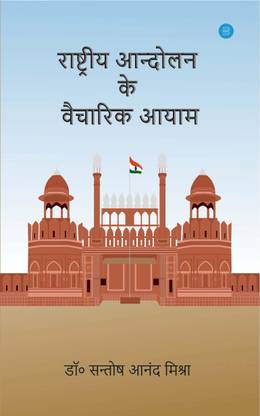Historical and Archaeological Evidence of Colorful Holi
By Dr. Santosh Anand Mishra
D.A.V Public School, Manpur,Kaiya,Gaya
Village - Mishrauli, Post - Kansi Simri, Dist - Darbhanga, State - Bihar
Introduction:
Holi, the vibrant Hindu spring festival, is a celebration of colour, joy, and the triumph of good over evil. Celebrated in the month of Phalgun (March) on the full moon day, it marks the arrival of spring and is known by various names such as "Dol Yatra," "Dol Purnima," "Basant Utsav," and "Festival of Colors." This document explores the historical and archaeological evidence that attests to the ancient origins and cultural significance of Holi.
Ancient Origins and Textual References:
Holi's roots are deeply entrenched in ancient Indian customs and agricultural practices, predating the Christian era. It is mentioned in early religious works such as:
1. Jaimini's Purva Mimamsa Sutras: This ancient text provides early references to the festival.
2. Kathak Grihya Sutras: Another early source that mentions Holi.
3. Vedas and Puranas: Detailed descriptions of Holi are found in texts like the Narada Purana and Bhavishya Purana.
4. Jaimini Mimamsa: This text also documents the celebration of Holi.
5. King Harsha's Ratnavali (7th century): King Harsha mentions "Holikotsav" in his literary work, providing historical validation.
Furthermore, it is noteworthy that Holi was not confined to the Hindu population. Muslim writers of the period also documented the celebration of Holi, indicating its widespread cultural acceptance.
Legends and Symbolism:
Two prominent legends are associated with Holi:
Holika and Prahlad: This story symbolizes the victory of good over evil. Holika, the demoness, was defeated by Prahlad's unwavering devotion to Lord Vishnu.
Krishna and Radha: This legend represents the playful love and romance between Krishna and Radha, symbolizing love, friendship, and the arrival of spring.
Holi's Colours in Harmony with Nature:
Traditionally, the colours used during Holi were derived from natural sources, including:
* Vegetables and plant extracts
* Flower petals
However, the use of artificial, chemical-based colours has become prevalent in modern times.
Archaeological and Artistic Evidence:
The presence of Holi is evident in ancient Indian art and records:
1. Chennakeshava Temple, Belur, Karnataka (12th century): Carvings on the temple walls depict Madanika Devi playing Holi, including an engraved statue with a "pichkari" (water gun).
2.Mahanavami Dibba, Hampi, Karnataka (1513 AD): Built by King Krishnadevaraya, this temple features carvings of women playing Holi with pichkaris and carved tubs.
3.Ramgarh, Vindhya Pradesh (300 BC inscription): An inscription found here mentions "Holikotsav," providing early epigraphic evidence.
4.Ahmednagar Painting (16th century): This painting depicts the essence of Vasanta Ragini, showcasing a royal couple enjoying music amidst playful women and vibrant colors.
5. Medieval Indian Temples: Numerous temples contain visual depictions of Holi.
6.Mewar Painting (c. 1755): This painting shows Maharana and his courtiers celebrating Holi with colored powder.
7.Bundi Miniature Painting: This painting depicts a king on an elephant being showered with colored powder from a balcony.
Symbol of Love and Unity:
Holi is often regarded as the festival of love, where people come together to express affection and admiration.
Couples celebrate by drenching each other in colors, symbolizing joy and happiness.
The playful atmosphere strengthens bonds of love and creates opportunities for intimate moments.
Philosophically, Holi represents the victory of spiritual goodness over material desires.
It encourages forgiveness, reconciliation, and the letting go of grievances.
The festival emphasizes the interconnectedness of all beings, promoting unity and harmony.
Holi serves as a reminder of acceptance, understanding, and the shared journey of love.
Conclusion:
The historical and archaeological evidence presented in this document demonstrates that Holi is an ancient festival with deep cultural and symbolic significance. From textual references in ancient scriptures to artistic depictions in temples and paintings, the celebration of Holi has been an integral part of Indian heritage for centuries. Its enduring popularity and universal appeal testify to its power to unite people in joy and celebration.













1 Comments
Thanks for this fabulous information about our historical festival HOLI✨👏👏👏✨
ReplyDeleteThank you